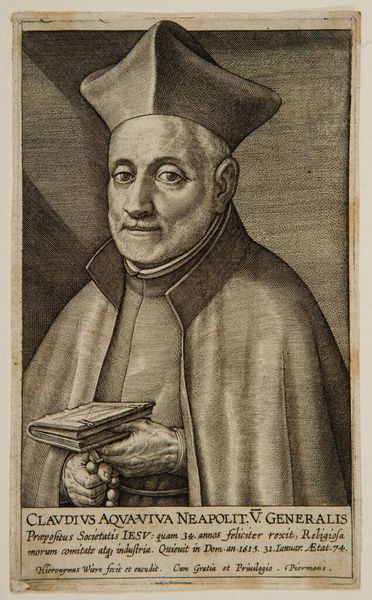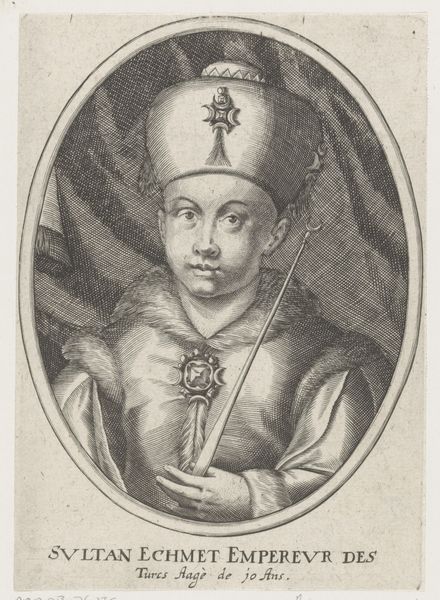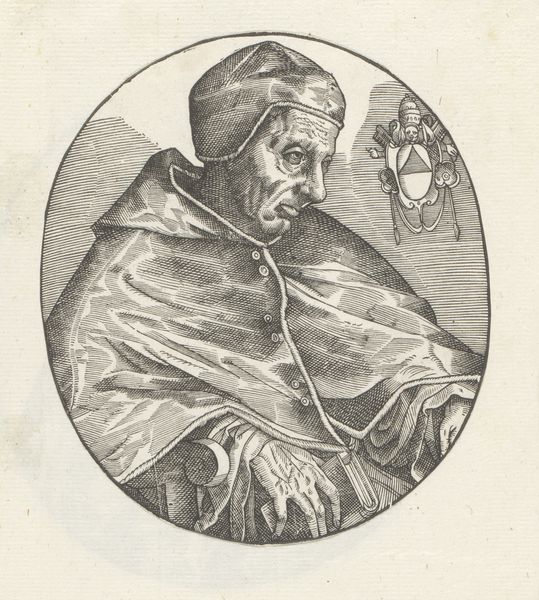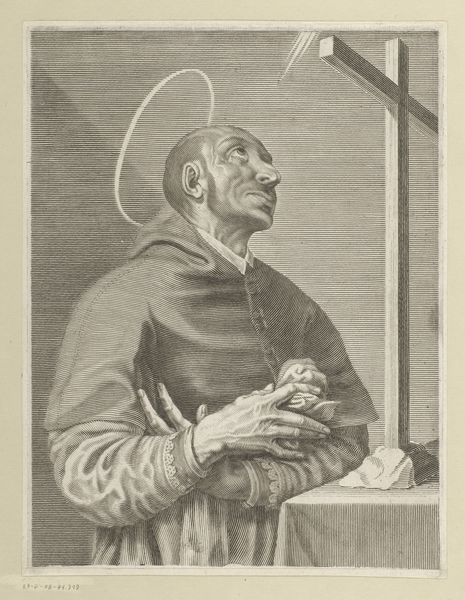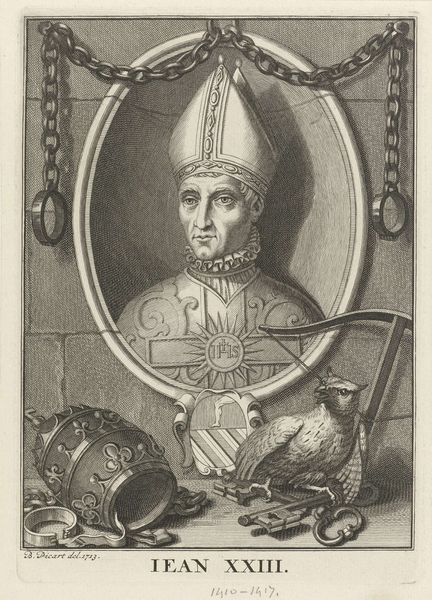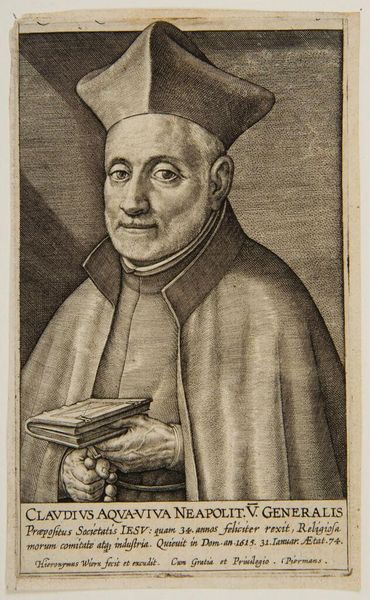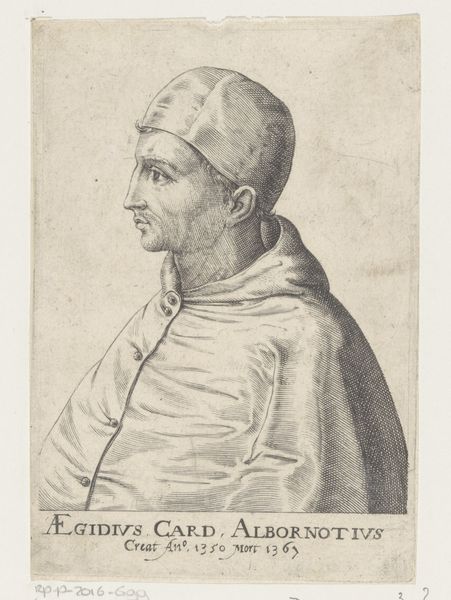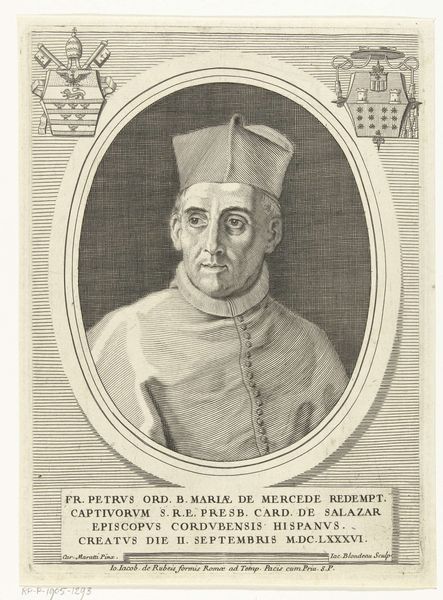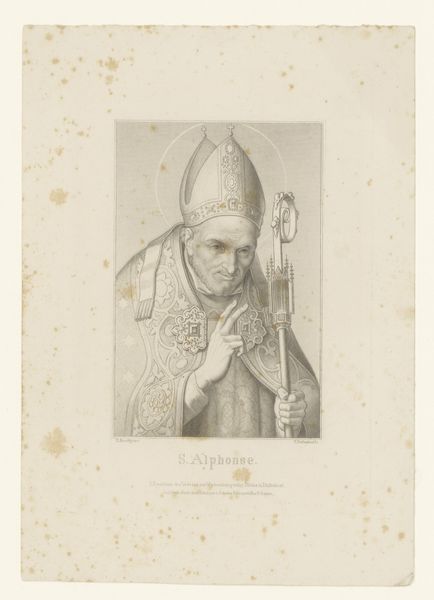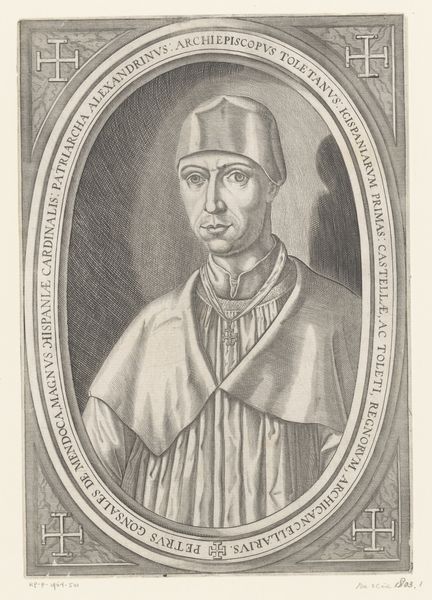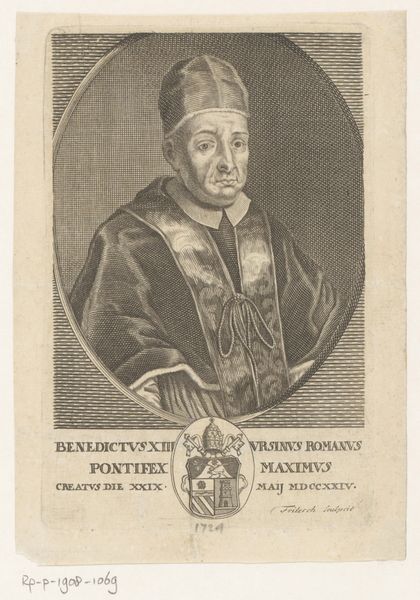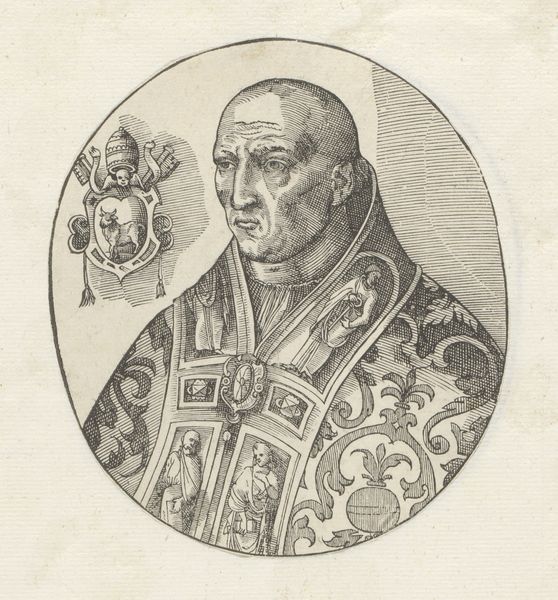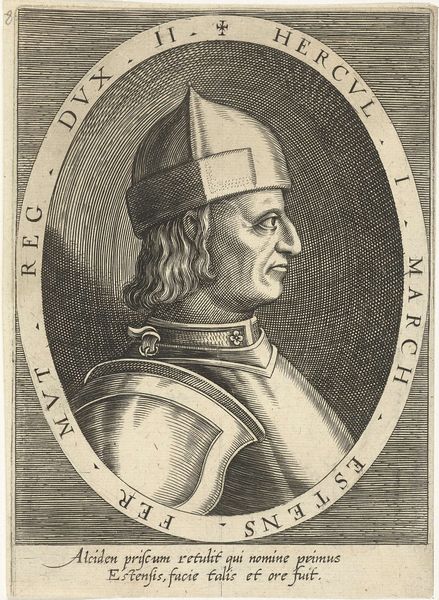
drawing, print, engraving
#
portrait
#
pencil drawn
#
drawing
#
neoclassicism
# print
#
caricature
#
pencil drawing
#
portrait drawing
#
history-painting
#
engraving
Dimensions: 178 mm (height) x 107 mm (width) (bladmaal)
Curator: This is an engraving dating from 1826, titled "Absalon." It is currently held at the SMK, the National Gallery of Denmark. It's attributed to Oluf Olufsen Bagge. Editor: What strikes me immediately is the stippled texture creating subtle gradations. Also, the stark formality, with the subject centered, fills the frame almost to the point of feeling confrontational. Curator: Yes, the symmetry and the unwavering gaze definitely establish a sense of authority. The tight hatching emphasizes the contours, especially in the face and the mitre. Do you get a sense of caricature from this work? Editor: I would argue, perhaps. The somewhat exaggerated brow, almost unnaturally smooth forehead, and down-turned mouth could lend themselves to that reading. Historically, Absalon, the Archbishop of Lund, was a key figure, both religiously and militarily. How might those aspects have influenced this portrayal? Curator: Interesting you mention the military aspect. Bagge perhaps tried to downplay his military might through an artistic flattening to give visual dominance to his role as a bishop. He may be trying to offer commentary, but the execution falls into neoclassicism which makes such interpretations somewhat complicated. Editor: Right. While neoclassical ideals often emphasized harmony and balance, there's an interesting tension here. Absalon, even depicted this way, remains an imposing figure. The symbols of his religious office contrast with what history tells us. His authority extended beyond the spiritual. He literally led armies. Curator: I think looking at the relationship of the crown and robe can help explore the historical complexities you described. They use line direction, geometric ornamentation, and cross-hatching to present an allegory of social standing and military posture. The engraver's work is extremely intentional and can't simply be brushed off as period work, in my opinion. Editor: I agree that the symbols are densely interwoven. Despite the classical influences the emotional residue seems much deeper. Thinking about power, duty, and how legacy shifts over time, makes this portrait quite arresting. Curator: For me, reflecting on it purely as an artifact, this neoclassical engraving offers an impressive amount of surface information and is ultimately an expression of form. Editor: And for me, I can’t help but find a trace of vulnerability despite his grand role and the artist’s adherence to the Neoclassical style. That human quality is probably what lingers longest.
Comments
No comments
Be the first to comment and join the conversation on the ultimate creative platform.
